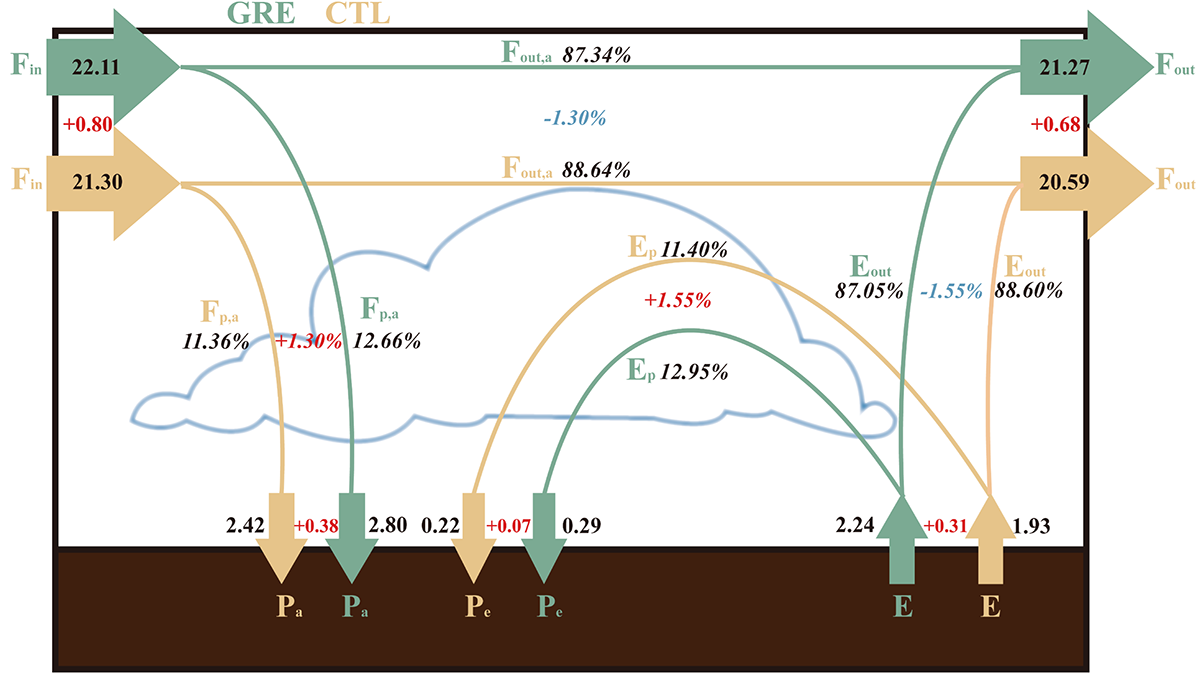Editors’ Highlights are summaries of recent papers by AGU’s journal editors.
Source: Geophysical Research Letters
Vegetation restoration has led to a greening of the Loess Plateau in China. Past studies suggested that the increased water consumption by plants may reduce soil moisture and regional water yield.
Using a regional climate model with water vapor tracers that tag moisture originating from different regions and track their transport in the atmosphere, Liu et al. [2023] examine how greening of the Loess Plateau influences the regional water cycle. Two numerical experiments were performed for the period 2002-2015, CTL with vegetation staying at the year 2001 level and GRE with vegetation greening as observed. They found that during the growing season, while greening caused evapotranspiration to increase (0.31 mm/day), precipitation increased even more (0.45 mm/day). Interestingly, the majority of the moisture for the increased precipitation originated from regions outside the Plateau.
Findings from this study suggest that the current level of greening in this region may not adversely impact the terrestrial water availability yet. Further greening, especially in a warmer climate, is subject to larger uncertainties.
Citation: Liu, Y., Ge, J., Guo, W., Cao, Y., Chen, C., Luo, X., et al. (2023). Revisiting biophysical impacts of greening on precipitation over the Loess Plateau of China using WRF with water vapor tracers. Geophysical Research Letters, 50, e2023GL102809. https://doi.org/10.1029/2023GL102809
—Guiling Wang, Editor, Geophysical Research Letters

